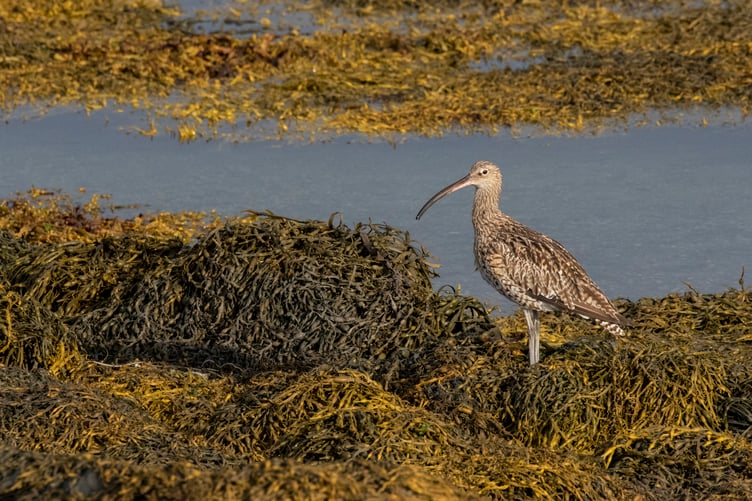In this month’s Manx Wildlife Trust column, Lara Howe takes a look at the Manx Marine Nature Reserve of Langness.
The Langness Marine Nature Reserve (MNR), off the southeast coast of the Isle of Man, spans an impressive 88.67km2, making it the third largest MNR on the island.
The MNR covers a range of distinct habitats, each supporting its own array of unique wildlife.
The peninsula, which juts dramatically into the sea, experiences strong tidal conditions on the seaward side, while the sheltered Derbyhaven Bay offers a contrastingly calm environment.
Derbyhaven is particularly significant as the only intertidal mud habitat in the island, an essential feeding ground for wildfowl and wading birds.
The underwater landscape at Langness is equally varied and vibrant. Limestone formations in the area form a small cave system, providing refuge for encrusting sponges, anemones, and sea squirts.
Lush eelgrass beds thrive in these waters, especially between the Langness Peninsula and Fort Island (also known as St. Michael’s Isle), forming the largest eelgrass beds in the MNR.
These eelgrass beds serve as a component of marine carbon capture and coastal erosion protection, stabilising the seabed and offering habitat for a diversity of species. They provide shelter for hermit crabs, various types of anemones, nudibranchs (sea slugs), burrowing invertebrates, and fish.
Recently, the Grooved topshell (Jujubinus striatus), a tiny sea snail last recorded in 1839 by Isle of Man naturalist Edward Forbes, was rediscovered here - a thrilling find for local Seasearch divers.
The wider bay and surrounding areas of the MNR are enriched by a thriving blend of kelp forest and mixed soft substrates. The kelp forests provide shelter and food and a nursery for a variety of marine organisms, whilst the mixed soft substrate attracts burrowing invertebrates, molluscs and bottom dwelling fish.
In addition to small marine life, Langness MNR is home to larger marine mammals. Atlantic grey seals are frequently seen resting on the rocks or swimming in the bay and gully, one of the few marine mammals visible all-year-round.
In the autumn, seal pups may occasionally haul up in Derbyhaven Bay to avoid rough seas. The MNR also attracts Risso’s dolphins, particularly between April and September, while the more elusive harbour porpoise is occasionally spotted throughout the year.
Birdlife flourishes in Langness, especially around Derbyhaven Bay, where a rich banquet of invertebrates attracts numerous bird species, particularly in winter.
Species such as curlew, whimbrel, teal, widgeon, brent goose, ringed plover, redshank, dunlin, and sanderling find food and shelter here.
Meanwhile, the seaward-facing rocky intertidal zones around the peninsula offer additional feeding and roosting grounds for a variety of bird species, making the MNR a popular destination for birdwatchers.
Beyond its marine ecosystems, the Langness area also plays an important role for terrestrial species and habitats, designated as the Langness, Derbyhaven, and Sandwick Area of Special Scientific Interest (ASSI).
It is the only place in the British Isles where the lesser mottled grasshopper has been recorded. These designations highlight the area’s importance not only to marine but also to land-based ecosystems and the need to protect them.




.jpeg?width=209&height=140&crop=209:145,smart&quality=75)